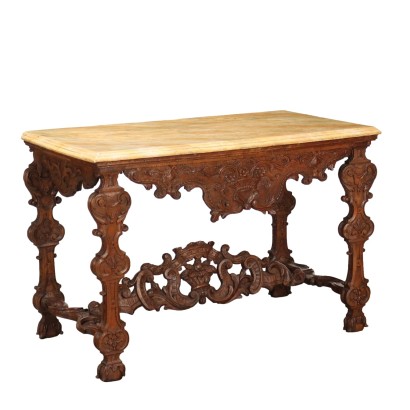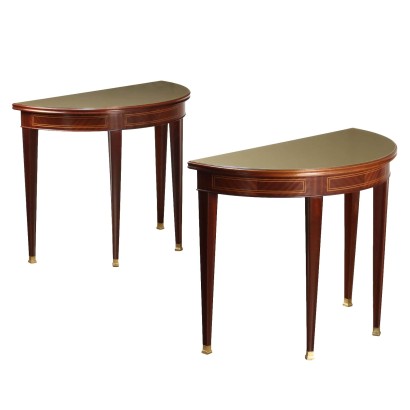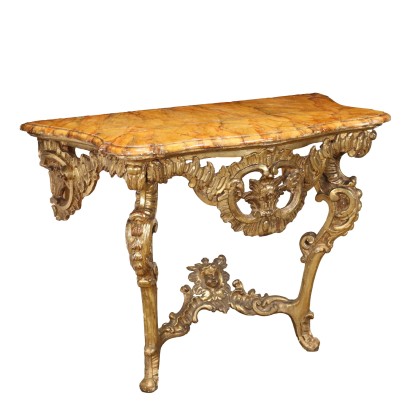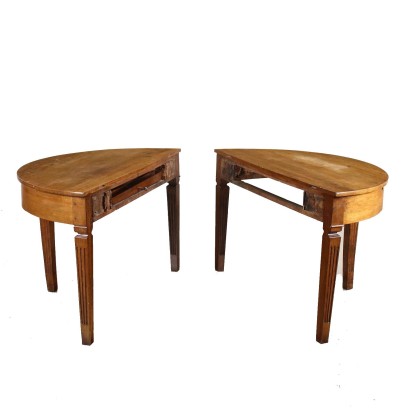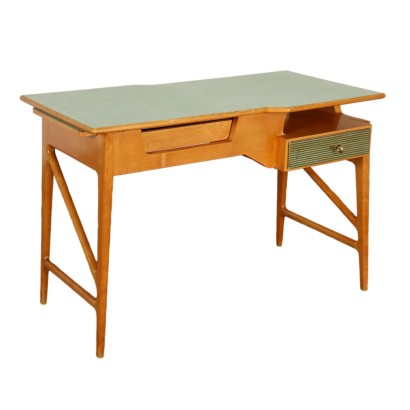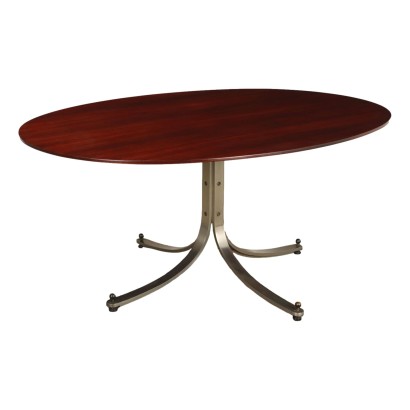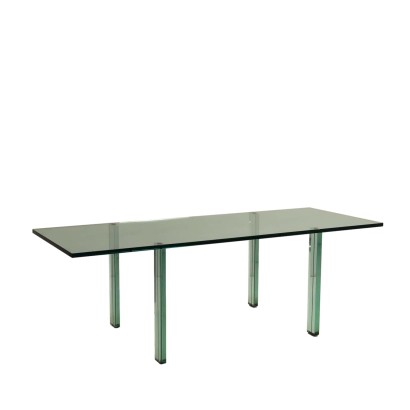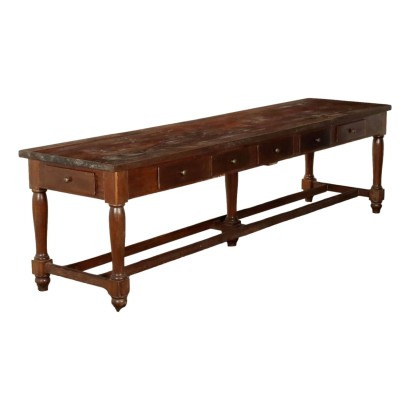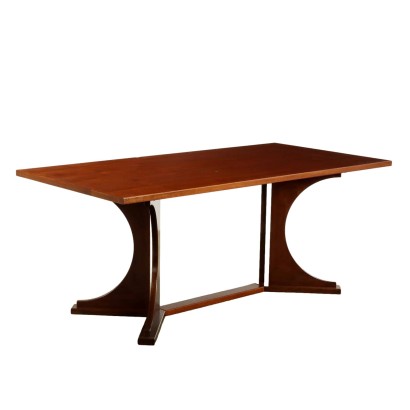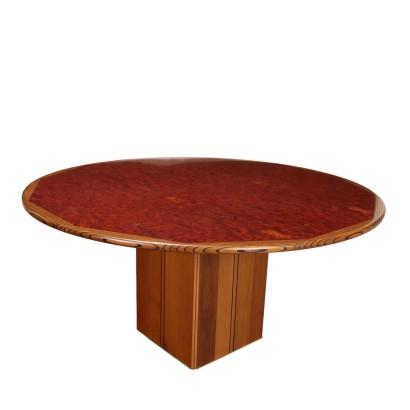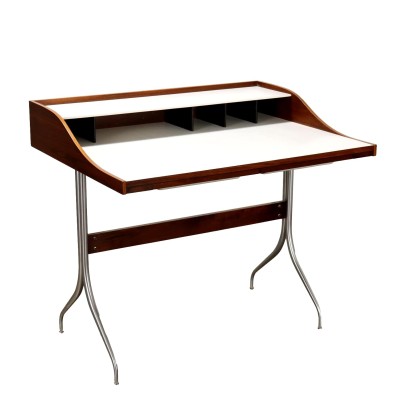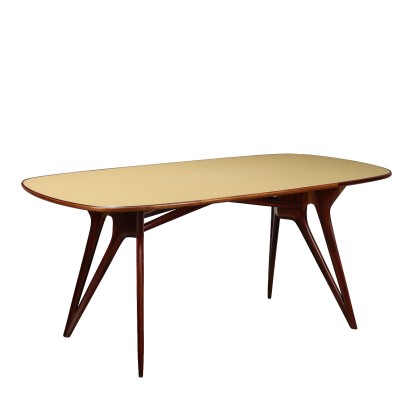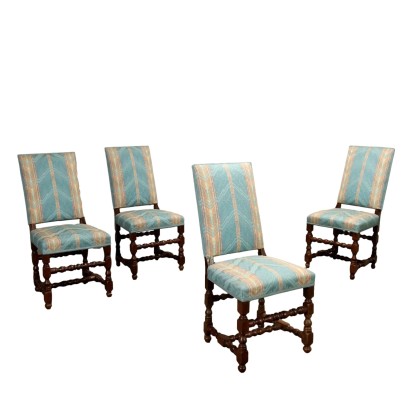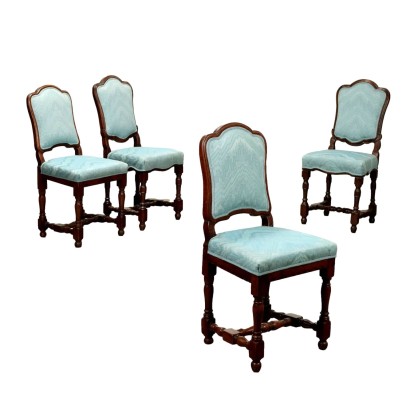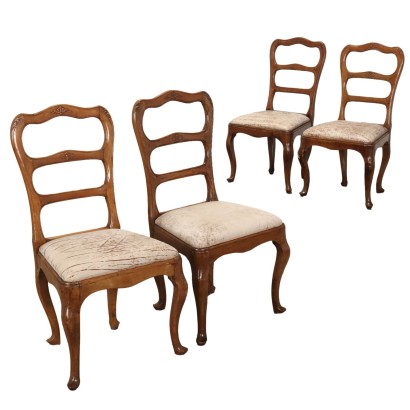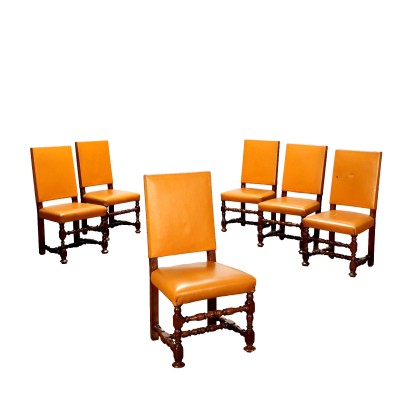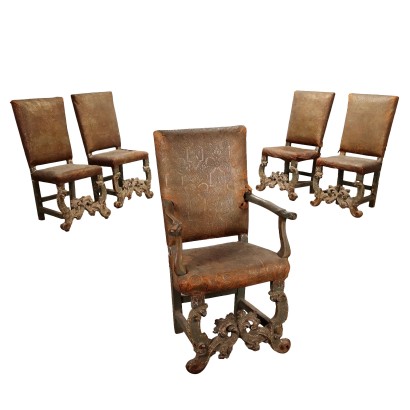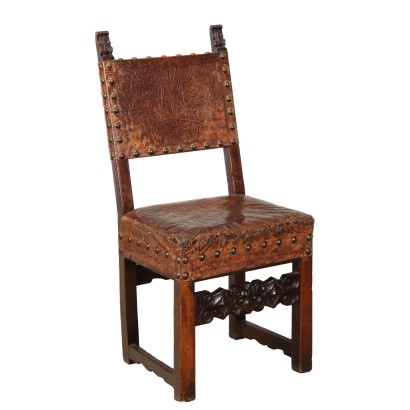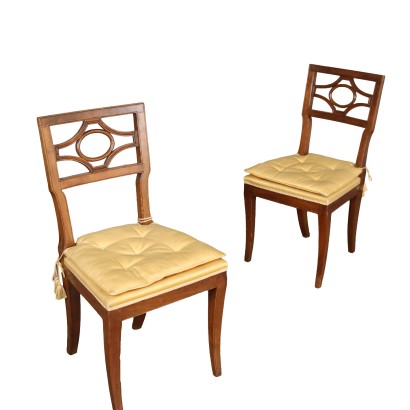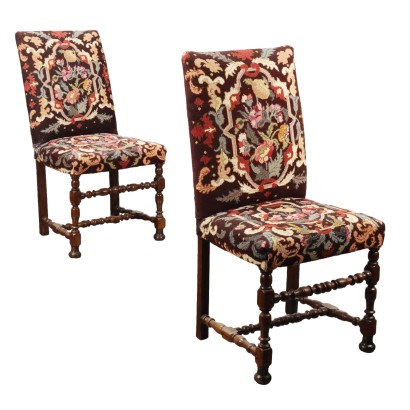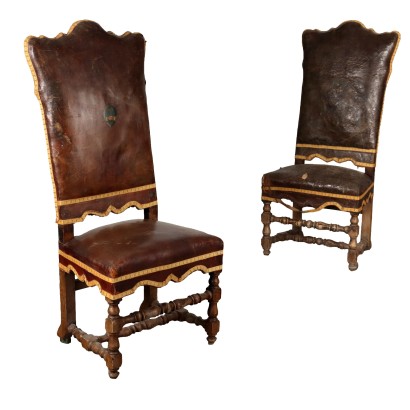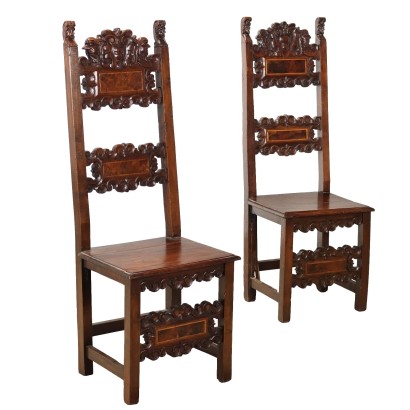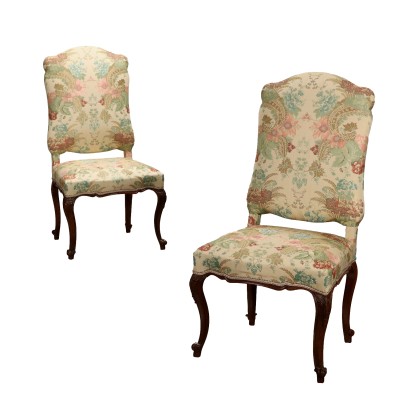Baroque Console - Lombardy Early 18th Century
Features
Lombardy Early 18th Century
Style: Baroque (1630-1730)
Age: 18th Century / 1701 - 1800
Origin: Lombardia, Italy
Main essence: Silver Fir , Linden
Material: Carved Wood , Lacquered Wood
Description
Baroque console table in lime wood, Lombardy Early 18th century. Marbled moulded top, shaped under-top band and uprights, connecting crosspieces. The richly carved console table features reserves, phytomorphic and floral decorations, leafy and "C" shaped scrolls, curls and Greek frets; in the upper part of the uprights, mirrored leafy scrolls support lambrequins. At the centre of the under-top band we find a basket containing flowers and plant branches, while just below, at the centre of the crosspiece, there is a basket containing a fruit and leaves, placed within an architecture of scrolls with a crowned cymatium. Top replaced, restorations. This console table is a beautiful example that demonstrates the influence of French taste on Lombard Baroque.
Product Condition:
Product that due to age and wear requires restoration and polishing. We try to present the real condition of the furniture as completely as possible with the photos. If some details are not clear from the photos, what is reported in the description is valid.
Dimensions (cm):
Height: 79
Width: 120
Depth: 61,5
Additional Information
Style: Baroque (1630-1730)
The term derives from the Spanish barrueco or Portuguese barroco phoneme and literally means "shapeless pearl".
Already around the middle of the eighteenth century in France it was synonymous with uneven, irregular, bizarre, while in Italy the term was of Medieval memory and indicated a figure of the syllogism, an abstraction of thought.
This historical period was identified with the derogatory term baroque, recognizing in it extravagance and contrast with the criteria of harmony and expressive rigor to which it was intended to return under the influence of Greco-Roman art and the Italian Renaissance.
Baroque, seventeenth-century and seventeenth-century were synonymous with bad taste.
As far as furniture is concerned, freedom of ideation, the need for pomp and virtuosity gave rise to a synergy destined to produce unsurpassed masterpieces.
The materials displayed were worthy of competing with the most amazing tales of Marco Polo: lapis lazuli, malachite, amber, ivory, tortoiseshell, gold, silver, steel, precious wood essences and more dressed the furnishings that in shape and imagination virtually gave life to the Arabian Nights of many of our powerful people.
Typical of the period were load-bearing or accessory parts resolved with twisted column motifs, clearly inspired by Bernini's canopy of St. Peter's, parts with rich sculptural carving in high relief and even in the round within a vortex of volutes, scrolls and spirals, curved and broken profiles, cymatiums agitated by gables of articulated shape, aprons adorned with ornaments, corbels, buttresses and anything else needed to enliven forms and structures.
The Baroque is also the century of illusionism: lacquers and thin temperas crowd furniture and furnishings to imitate with the marbling effects of marble veining or games of veining of precious briar.
Find out more about the Baroque with our insights:
Classic Monday: a double-body sideboard, late Venetian Baroque
Classic Monday: a pair of candle holders between the Renaissance and Baroque
Classic Monday: a pair of mirrors between Baroque and Late Baroque
Age: 18th Century / 1701 - 1800
18th Century / 1701 - 1800Main essence:
Silver Fir
Soft coniferous wood, used for rustic furniture or to build the chest, that is the structure, of furniture then veneered in more precious woods. It has been used since ancient times, its most valuable use is, in the Spruce variant, in the inlays of French antique furniture of the '700 . The spruce, more typical of northern Europe, in Italy grows mainly in the Eastern Alps at altitudes above 1300 m. The noblest use of this essence was in the construction of violins, guitars and cellos: Stradivari himself produced his famous violins with this wood.Linden
It is a soft, whitish and light wood, used in the past for inlay and carving works.Material:
Carved Wood
Lacquered Wood
Other customers have searched:
Consolle, tavolo da parete, tavolo d'appoggio, tavolo parietale..
Approfondimenti
Scopri di più sulle consolle e tavoli parietali con gli approfondimenti del nostro blog e di FineArt:
Una superba consolle austriaca
L'attenzione neoclassica per i dettagli in una consolle torinese decorata a pastiglia
Una raffinata consolle demi-lune piemontese neoclassica
L'estetica elegante e raffinata di una Consolle fratinata
Simili ma diverse: una consolle Luigi Filippo e una umbertina a confronto
Consolle a pastiglia
Tavolo parietale, Firenze 1780-1785ca.
Consolle inglese, metà XIX secolo
Consolle parietale
Coppia di consolle in pietre laviche
Consolle anni '50, manifattura italiana
Sull'antiquariato in generale dai un'occhiata anche a
Classic Monday: da un pezzo dei nostri magazzini alla storia dell'antiquariato
Il dizionario dell'antiquariato - Lastronatura
Il dizionario dell'antiquariato - Mascherone
Il dizionario dell'antiquariato - Natura morta
Il dizionario dell'antiquariato - Opificio
Il dizionario dell'antiquariato - Pastiglia
Il dizionario dell'antiquariato - Savonarola
Il dizionario dell'antiquariato - Rosone
Approfondimenti
Scopri di più sulle consolle e tavoli parietali con gli approfondimenti del nostro blog e di FineArt:Una superba consolle austriaca
L'attenzione neoclassica per i dettagli in una consolle torinese decorata a pastiglia
Una raffinata consolle demi-lune piemontese neoclassica
L'estetica elegante e raffinata di una Consolle fratinata
Simili ma diverse: una consolle Luigi Filippo e una umbertina a confronto
Consolle a pastiglia
Tavolo parietale, Firenze 1780-1785ca.
Consolle inglese, metà XIX secolo
Consolle parietale
Coppia di consolle in pietre laviche
Consolle anni '50, manifattura italiana
Sull'antiquariato in generale dai un'occhiata anche a
Classic Monday: da un pezzo dei nostri magazzini alla storia dell'antiquariato
Il dizionario dell'antiquariato - Lastronatura
Il dizionario dell'antiquariato - Mascherone
Il dizionario dell'antiquariato - Natura morta
Il dizionario dell'antiquariato - Opificio
Il dizionario dell'antiquariato - Pastiglia
Il dizionario dell'antiquariato - Savonarola
Il dizionario dell'antiquariato - Rosone
Product availability
The product can be seen at Cambiago
Disponibilità immediata
Pronto per la consegna in 2 giorni lavorativi dalla conferma dell'ordine del prodotto.
Consegna tra i 7 e i 15 giorni in tutta Italia. Per le isole e le zone difficilmente raggiungibili i tempi di consegna possono variare.



